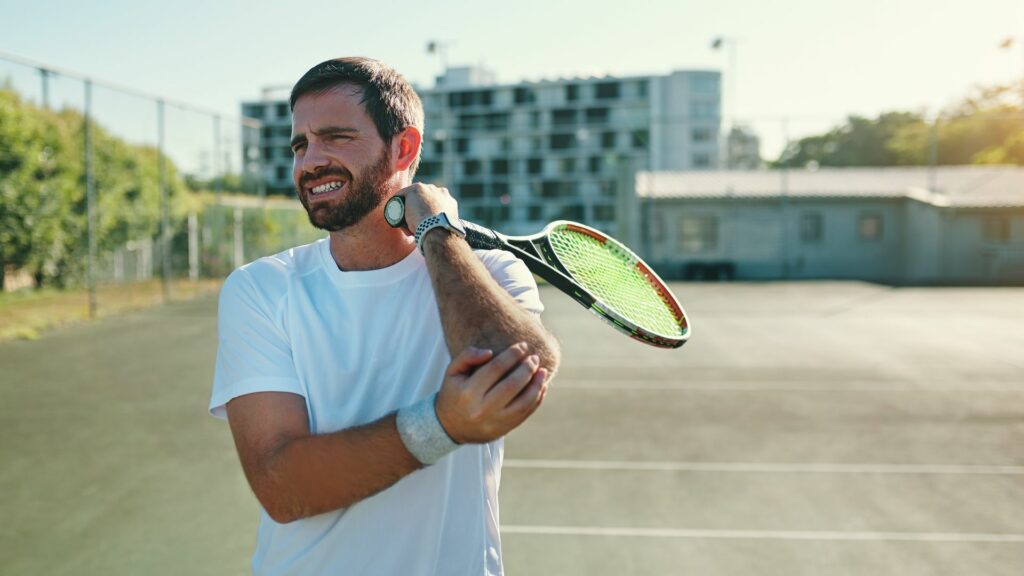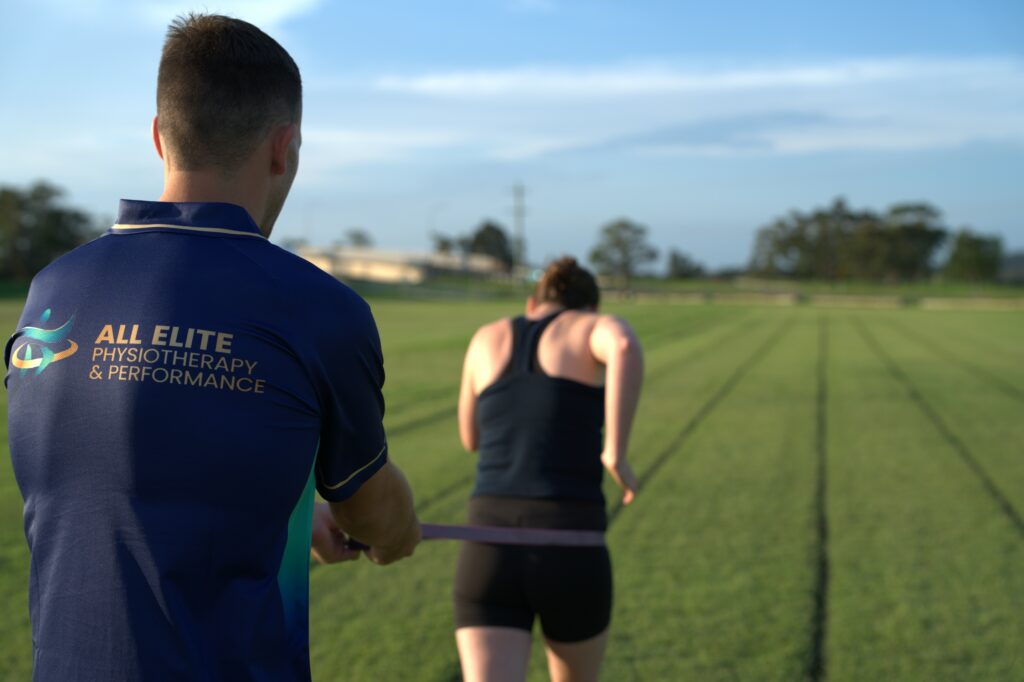The 4 Most Frequent Causes of Sports Injuries in Athletes
Sports injuries are an unfortunate reality for athletes at all levels, from weekend warriors to professional veterans. From a rolled ankle in a football match to a hamstring strain during speed work, injuries can derail progress, limit performance, and escalate into chronic, long-term issues if left unaddressed. The etiology of sport injuries is of the utmost concern to athletes, coaches, and fitness professionals, and even more important is a knowledge of how to prevent them.
According to Sports Medicine Australia, as many as 50% of all sports injuries could have been prevented with early intervention and proper preparation. With so many active individuals participating in football, basketball, tennis, and running — all high-risk activities — the need for sports injury prevention has never been greater.
Now let's get into the four most common causes of sports injuries to athletes and, more importantly, how to decrease your risk.
1. Overuse and Repetitive Motion
Overuse injuries result when athletes continuously stress certain muscles, joints, or connective tissues and do not provide them enough time to recover. The cumulative micro-injuries gradually add up to create pain, inflammation, and the eventual development of disorders such as stress fractures, shin splints, and tendonitis. These types of sports injuries are especially prevalent in endurance sports, including long-distance running, swimming, cycling, and tennis, where repetitive motion is an integral component of sporting performance.
Key Examples include
- Recurrent backhand tennis elbow
- Shin splints
- Knee injuries from high mileage and improper biomechanics
- Stress fractures in the foot or shin from repetitive running on hard surfaces

Should the overuse injury occur, it can readily increase to an acute injury such as an ankle sprain or small tear, or lead to a chronic condition if not treated, this chronic pain can cause decreased performance, and a strong likelihood of further severe injury, such as a complete tendon tear or bone fracture.
How to prevent overuse injuries:
- Implement structured training cycles with alternating weeks of high loads and deloads
- Use cross-training to exercise different muscle groups and reduce repetitive stress
- Prioritise training surfaces and correct footwear to reduce impact
- Actively seek early intervention for any persistent discomfort before it worsens.
2. Improper Technique or Form
Poor technique is usually one of the most overlooked causes of typical sports injuries. Bad movement patterns cause asymmetrical stresses on joints, ligaments, and muscles and result in muscular imbalances, acute injury, or chronic overuse. Minor mistakes, multiplied by time or during a fatigued state of the body, can greatly heighten the risk of injury.
Serious common injury examples include:
- Lifting weights with an excessively bent back, leading to disc herniations or low back pain
- Inappropriate landing mechanism on jumps, causing ACL injuries or shin splints in sports like basketball and netball
- Improper throwing mechanics cause shoulder impingement in baseball sports
Athletes may also develop bad habits through such factors as fatigue, past injuries, weakness, or just lack of feedback from coaches. Moreover, even world-class athletes build up technical deficiencies over the years without periodic form checking.
How to fix and avoid incorrect technique injuries:
- Collaborate with a qualified coach who frequently reviews technique.
- Obtain and watch video footage of key movements. Emphasise the development of basic strength and flexibility to permit normal movement patterns.
- Avoid pushing through exhaustion when form begins to break down
3. Inadequate Warm-Up and Cool-Down
By failing to do an effective warm-up or neglecting to cool down, you will significantly raise your chances of developing long-term problems, including joint stiffness, muscle tightness, and inefficiency of movement.
A warm-up readies the body for action by:
- Elevating muscle temperature, improving elasticity, and accelerating contractile velocity
- Improving the nervous system to facilitate faster reactions and better coordination.
- Increasing joint lubrication for safer, smoother motion
If this preparation does not take place, muscles, ligaments, and tendons are tight and less reactive, and are much more likely to be torn, strained, or have the lower limbs injured from awkward landings.

Similarly, failure to undertake a cool-down session after intense exercise allows the build-up of metabolic waste products like lactic acid, which enhances soreness, stiffness, and delayed recovery—factors that set athletes up for injury in their next training session.
Best practices for preparatory and recovery exercises:
- Start with 5–10 minutes of gentle cardio (jogging, cycling) and then sport-specific dynamic stretches
- Include drills mimicking game demands for movement (e.g., jumps, shuffles, accelerations)
- Following the session, perform static stretches for major muscle groups, including the hip flexors, hamstrings, calf muscles, and inner thighs. Incorporate deep breathing techniques and mobility exercises to facilitate relaxation and enhance recovery.
4. Insufficient Recovery or Rest
Within sport today, the push for higher levels of training intensity and inadequate recovery and rest between sessions will cause you to suffer. One of the leading causes of acute and chronic injury is a lack of rest. Without rest, your muscles, tendons, ligaments, and even bone structures will become overloaded, causing swelling and improper repair, as there is insufficient time for the micro-damage during training to heal, reducing tissue resilience.
The primary dangers of poor recovery include:
- The occurrence of overload injuries like stress fractures, Achilles tendinopathy, muscle strains, or ligament sprains.
- Increased risk of acute muscle strains and sprains when fatigued
- Poorer immune system, so illness is more likely and takes longer to recover from
Nevertheless, keep in mind that even experienced athletes can overwork their physical activity levels, leading to overtraining and fatigue.
Gain is made during recovery — that's where muscle is repaired, tendons get stronger, and the nervous system adapts.
Strategies to improve recovery:
- Incorporate rest days into your training schedule strategically.
- Sleep 7–9 hours of quality sleep per night
- Maximise nutrition with sufficient protein, fluids, and anti-inflammatory foods
- Employ active recovery (yoga, swimming, gentle mobility movements) to encourage circulation
- Continuously monitor training volume and adjust it as necessary based on your body's feedback.
How to Reduce Your Risk of Injury
Trauma is typically preventable.
Overuse and repetitive motion → Prevent by using varied training and intelligent loading.
Improper form → Rectify through training, strength training, and analysis of motion.
Skipping warm-up/cool-down → Always prepare and recover properly.
Inadequate rest → Prioritise scheduled recuperation to enable your body to recover stronger.
Additional Injury Prevention Tips:
- Maintain strong, balanced muscles
- Ensure you use proper equipment and supportive footwear
- Stay hydrated and fuel your body appropriately
- Properly address previous injuries before returning to play
Specifically, sessions with a professional coach or physiotherapist are able to identify early signs of risk and offer personalised strategies to prevent injury.
At All Elite Physiotherapy and Performance, our experienced team is dedicated to helping athletes remain on the field or track, be stronger, quicker, and injury-free.

If you're keen on maximising your performance and reducing sports injury risk factors, visit our Sporting Injury Management programs today!
Frequently Asked Questions
What are 4 types of sports injuries?
- Acute injury (e.g., sprained ankle)
- Chronic injuries (e.g., stress fractures)
- Overuse injuries (e.g., tennis elbow)
- Traumatic injuries (i.e., Anterior Cruciate Ligament (ACL) tear)
What sports cause the most injuries?
Contact sports like football, rugby, and basketball have the highest incidence, but endurance sports like long-distance running also experience a high rate of overuse injuries.
What are the main reasons that an injury will occur for an athlete?
They have the same causes, which include overuse, poor technique, inadequate warm-up, inadequate recovery, muscle imbalances, and undiagnosed previous injuries.
